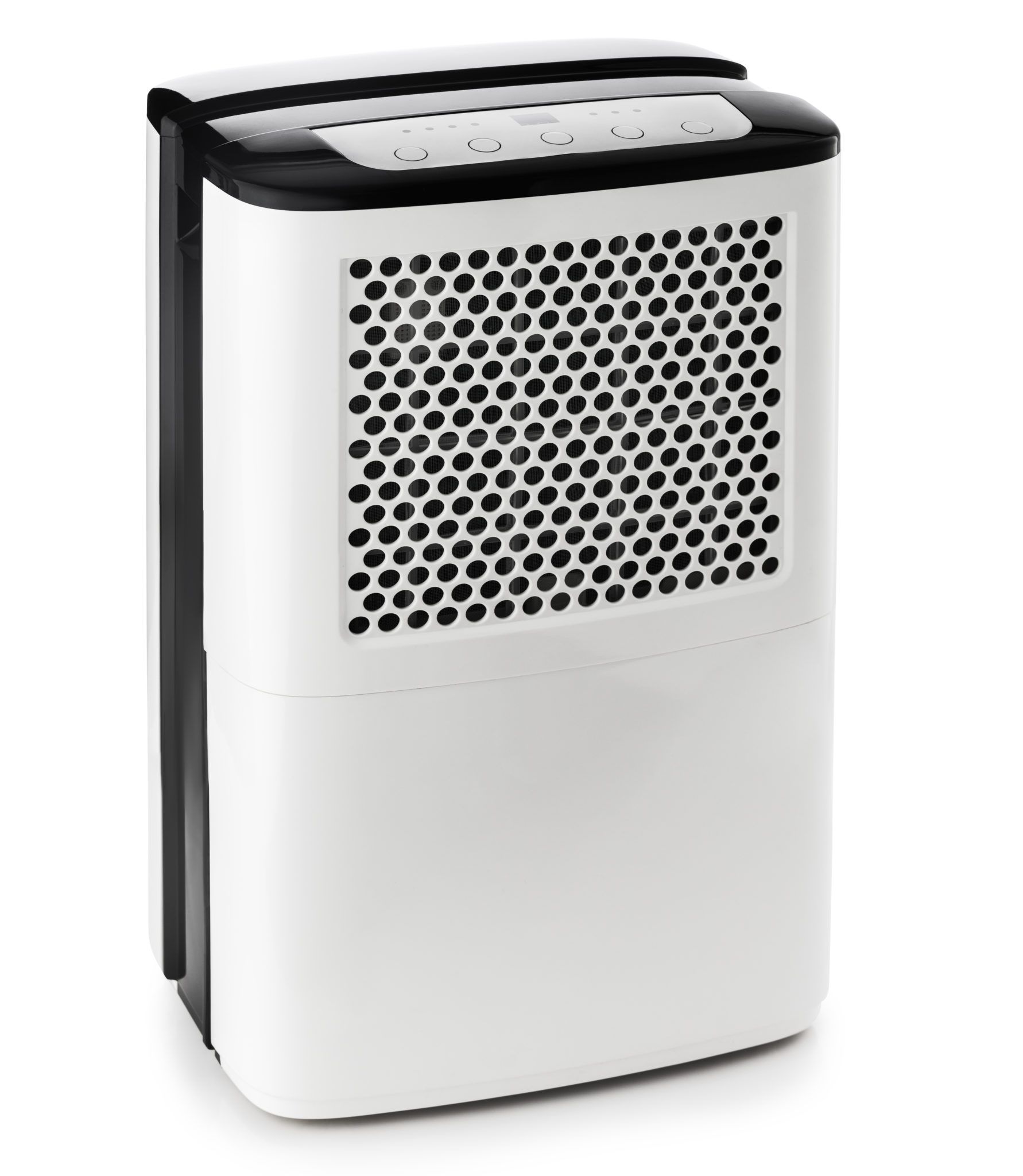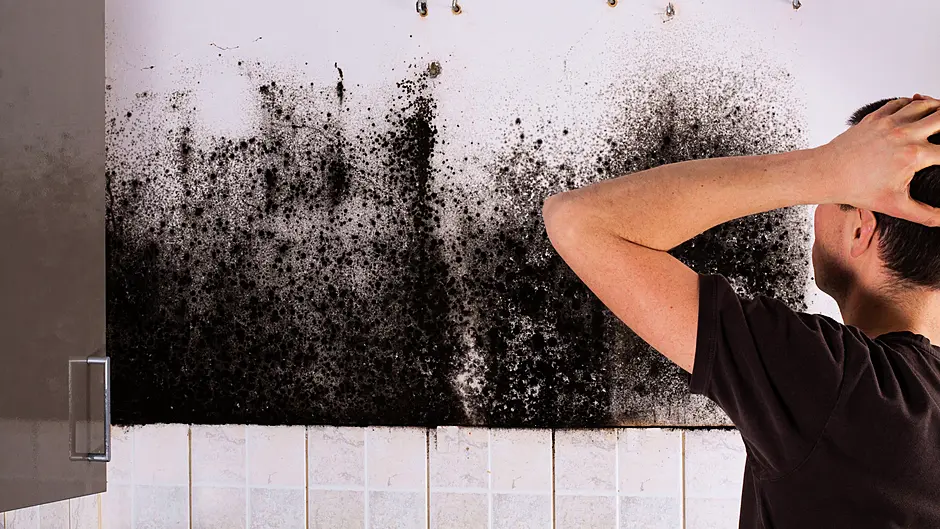It looks terrible, smells bad and has potentially serious consequences for you, your home and its contents. All is not lost however. there are a number of effective measures you can take in the battle against damp, writes Emma Connolly.
NOW that more seasonal temperatures are here, home owners are beginning to turn on their heating and close their windows which can cause problems with condensation and encourage dreaded damp. It’s an issue that can impact modern homes, just as much as older properties, as newly-built houses are being sealed tighter than ever, decreasing natural air flow.
Signs you’ve got a problem include that tell-tale musty smell, droplets of water around windows, to more serious things like water streaming down walls and clothes in wardrobes covered in mould. Outside of being unpleasant, mould and mildew can have health implications including respiratory issues.
But key to preventing all of this is to control humidity in the home and to ensure adequate ventilation, according to Pat Murphy of AquaStop, an innovative specialist in the treatment of dampness and condensation. The company was established in 2011 and supplies a range of high-quality ventilation and humidity products in the domestic, commercial and industrial markets.
‘The main cause of internal damp comes from condensation, which happens when a house is too humid, and warm air hits cold surfaces, typically windows and walls’, he said.
‘Most people don’t know that an average person will create 20 litres of moisture per week,’ said Pat. ‘So imagine if you’ve a family of six (and a dog!), how much moisture will be in the air in your home, outside of that created by things like showering, cooking and drying clothes.’
Essentially, the higher the internal humidity, the bigger the potential for problems, he explained.
‘Mould will grow in temperatures of around 18 degrees Celsius plus, combined with an indoor humidity level of above 60%. Ideally a home’s humidity should hover in and around 50%, and the best way of controlling it is by investing in a dehumidifier. Every home in the country should have one,’ he said.
He advises using a desiccant type, where a fan draws air into the dehumidifier and passes it through a section of a slowly rotating wheel which holds desiccant and dries the air.
 Dehumidifiers: ‘Every home in the country should have one.’ says expert Pat Murphy.
Dehumidifiers: ‘Every home in the country should have one.’ says expert Pat Murphy.
‘Running costs vary, based on usage but it has several advantages. It reduces the humidity in the air to an acceptable level which means your heating is much more effective as it’s not heating damp air which in turn means that you’ll be able to turn down your thermostat. The air that comes out of a desiccant dehumidifier is normally 5 or 6 degrees warmer, thus heating its environment. In utility rooms, these dehumidifiers are also used for drying clothes on a clothes horse,’ he said.
An added bonus is that many pests such as silver fish and book lice don’t survive in low humidity homes.
Using anti-mould paint will help affected walls, but won’t solve the problem. The key is removing excessive moisture.
When it comes to ventilation, many recently-built homes will have installed a heat recovery ventilation system. An alternative, and more affordable option which can be easily retrofitted is a Central Extract System. This involves mounting a central unit in a loft and ducting this to extract damp air from the wet rooms of the house.
He also sees the benefit of using the Positive Input Ventilation System.
‘Our PIV Units are sophisticated whole-home ventilation and condensation control units. By drawing in fresh, filtered and clean air from outside, the units gently ventilate the home from a central position on a landing in a house or the central hallway in an apartment or bungalow. Moisture laden air is diluted, displaced and replaced to control humidity levels between 45-60%. This significantly reduces or eliminates surface condensation. With lower humidity levels, dust mite populations are also substantially reduced to provide a significant improvement in the health of asthma sufferers and general indoor air quality,’ he said.
‘Passive ventilation – eg opening windows – is naturally an effective measure but on low-humidity days,’ says Pat.
‘I advise people to become familiar with checking humidity levels for both inside the property and outside by buying a humidity sensor for themselves. Your inclination may be to open a window say after a shower, but if humidity levels are high outside, you may be drawing more humidity into the property’.
Outside a property, penetrating damp is typically caused by cracks on gable walls, usually southwest facing where they’re hit with driving rain; leaking or cracked chimneys, or faulty guttering which cause walls to become damp.
In relation to other properties, they may have rising damp due to ground conditions around the house or may have no damp proof membrane (such as DPC) installed.
AquaStop is an exclusive distributor and installer of an innovative Liquid Rubber product range which deals with issues like leaking flat roofs, valleys, gutters and chimney stacks.
‘The range also has products which provide protection for porous surfaces like stone, brick, concrete etc. and which can be painted over at any stage,’ he said.
AquaStop have also recently become the sole Irish distributor and approved installer of a range of products he compares to ‘liquid glass’ which is designed for sealing and protecting stone from moisture.
Ultimately, he says there are solutions for all problems, but it’s important not to ignore them.
‘No two properties are the same, in terms of how people live, but if you remember that with insulation, you’ll need proper ventilation, and by getting the humidity right, you can easily achieve and maintain a comfortable and damp-free home,’ he said.
 Heat recovery ventilation systems are just one option when it comes to preventing damp but it’s important to remember there are multiple causes and solutions for damp, depending on the condition of the property, its location, weather etc.
Heat recovery ventilation systems are just one option when it comes to preventing damp but it’s important to remember there are multiple causes and solutions for damp, depending on the condition of the property, its location, weather etc.
This article originally appeared in The Southern Star's Autumn Home and Garden supplement. Subscribers can read the full supplement via our ePaper.








